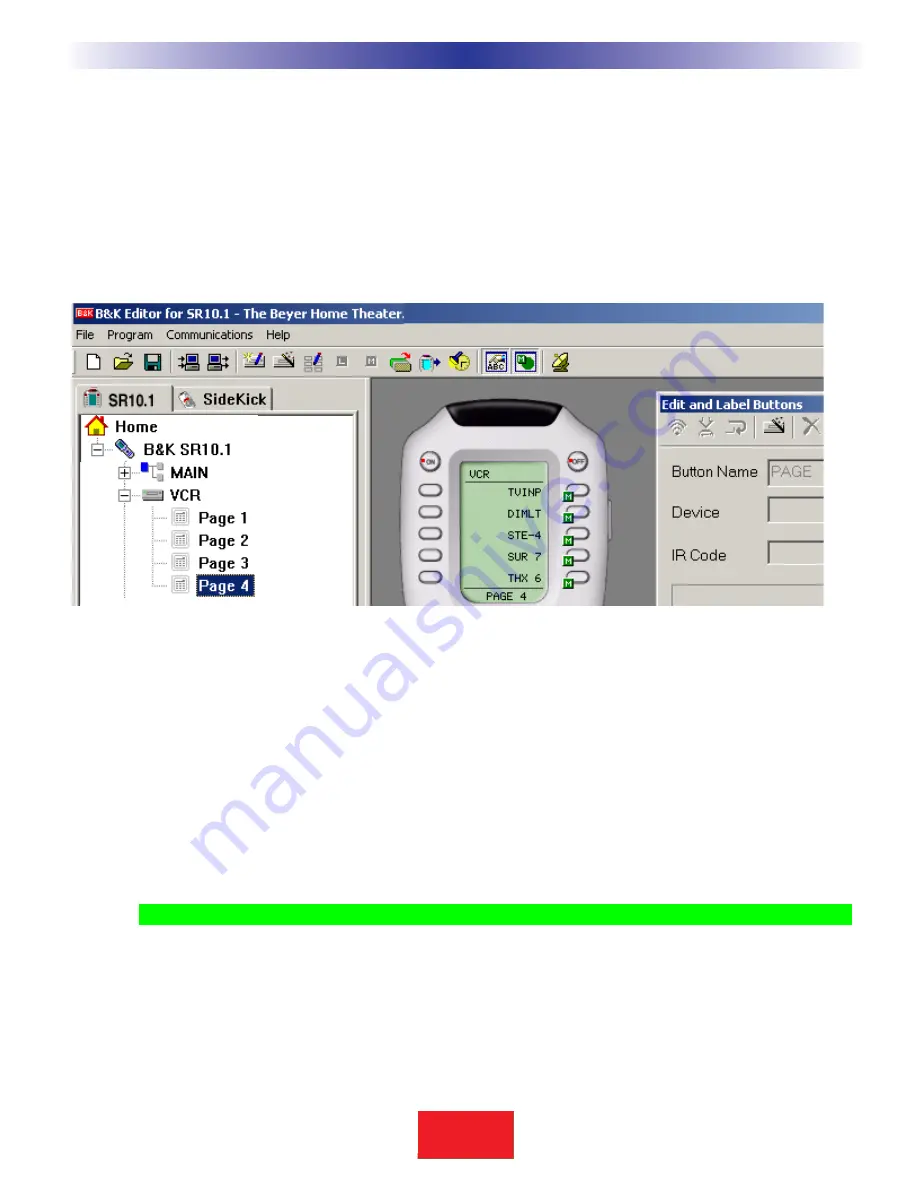
Modular Macro Programming - Using the Import Macro Feature
Utilize the Import Macro feature for speed in programming.The only catch to using Import Macro is that you must
do it before you press RECORD. By first programming macros on an unused device page (you can delete them after
you are finished programming your macros), you can break up long macros into modules and greatly speed the
macro recording process.
For example, if you have a system with components that require long sections within each Activity Macro for anchoring
the TV input, dimming the lights, or setting up the surround sound, precisely write the sections first, then import each
section into each of your Activity Macros, edit as required and SAVE.
In this example, macro components are arranged on an empty VCR page. After all the MAIN Activity Macros are
programmed, these macros can be deleted or left on a hidden page as you see fit.
Building A Device Library
B&K Editor’s ability to import and export devices is a powerful programming accelerator. Remember, when you
export a device you export all of its learned IR codes and custom labels.Whenever you find that you have done
extensive learning and/or labeling, EXPORT the device and save it for use in other systems. Always save it with a
name that gives all three database fields: Category (VCR), Manufacturer (SONY), and Model (SLV5000).Whenever
you are starting a new system, peruse your saved devices (.mxd files) and IMPORT any that are previously config-
ured.
TIP - Export FAVORITES that you have relabeled and Import them at similar jobs.
53
Advanced Programming Techniques and Ideas
S
B
I M P LY
E T T E R !
B K
&
T
H
E
B
&
K
A
U
T
O
M
A
T
E
D
T
H
E
A
T
E
R
Содержание SR10.1
Страница 66: ...60 Notes S B IMPLY ETTER B K U S I N G B K E D I T O R T O P R O G R A M...
Страница 67: ...S B IMPLY ETTER B K...










































